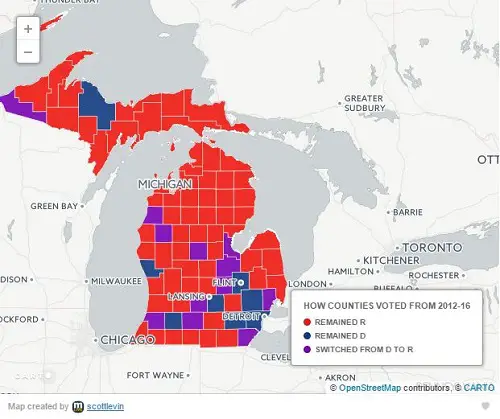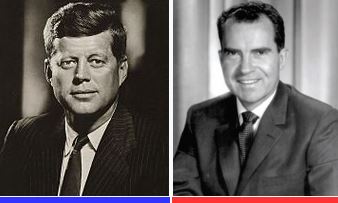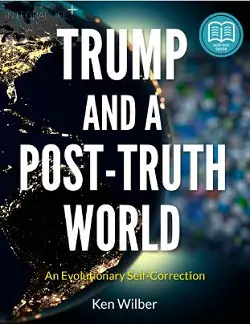|
TRANSLATE THIS ARTICLE
Integral World: Exploring Theories of Everything
An independent forum for a critical discussion of the integral philosophy of Ken Wilber
 David Christopher Lane, Ph.D.
Professor of Philosophy, Mt. San Antonio College Lecturer in Religious Studies, California State University, Long Beach Author of Exposing Cults: When the Skeptical Mind Confronts the Mystical (New York and London: Garland Publishers, 1994) and The Radhasoami Tradition: A Critical History of Guru Succession (New York and London: Garland Publishers, 1992). David Christopher Lane, Ph.D.
Professor of Philosophy, Mt. San Antonio College Lecturer in Religious Studies, California State University, Long Beach Author of Exposing Cults: When the Skeptical Mind Confronts the Mystical (New York and London: Garland Publishers, 1994) and The Radhasoami Tradition: A Critical History of Guru Succession (New York and London: Garland Publishers, 1992).SEE MORE ESSAYS WRITTEN BY DAVID LANE The Missing NuanceKen Wilber and the Misuse of StatisticsA Four-Part Critique, Part TwoDavid Lane
Wilber does his overall argument about our current political turmoil a great disservice by bastardizing it with phantom numbers.
In Ken Wilber's recent e-book, Trump and a Post-Truth World, which is filled with a rich array of pregnant opinions, he tends to over generalize using very questionable statistics to support his claims. In this regard, he is all over the map when he employs numbers that appear impossible to justify, much less verify as being based on sound scientific surveying methods. Why Wilber is so sloppy in this regard makes one wonder if he is only interested in propping up his Integral map to those who are already converted. Otherwise, suggesting that “Green is today's major leading-edge stage (with around 20-25% of the population)” without providing where such a percentage comes from is to invoke a not so subtle form of sociological abracadabra. In going over Wilber's various stats (over 30 different citations in the course of his book), one is reminded anew of Mark Twain's popular (and wrongly attributed) witticism, “There are three kinds of lies: lies, damned lies, and statistics." Instead of providing us with parenthetical nuances (a necessary caveat for anyone truly interested in engaging an intellectually honest inquiry), Wilber, as is his pernicious habit, provides us instead with universal caricatures, such as
“Meanwhile, the leading-edge green cultural elites—upper-level liberal government, virtually all university teachers (in the humanities), technology innovators, human services professions, most media, entertainment, and most highly liberal thought leaders—had continued to push into green pluralism/relativism—'what's true for you is true for you, and what's true for me is true for me....” (p. 18)
Couldn't Wilber make this same point without making things up that he cannot possibly know to be true? For example, having been a university professor and college teacher myself at various institutions of higher learning for the past 30 plus years—from the University of California, San Diego to California State University, Long Beach to Mt. San Antonio College—do I find it at all plausible that “virtually all university teachers (in the humanities)” believe that “what's true for you is true for you, and what's true for me is true for me. . . .”? Nope. In fact, I personally don't know of one professor in my some three decades of teaching who holds such a solipsistic belief. Where does Wilber come up with such a percentage? Well, the answer is obvious: he makes it up since in order to derive such a statistic it would necessitate polling all university teachers in the United States and elsewhere and posing the question in the very format he frames it. Wilber does his overall argument about our current political turmoil a great disservice by bastardizing it with phantom numbers. Wilber laments that our culture is saturated with “aperspectival madness” and because of this
“evolution finds it's necessary to take certain self-correcting moves. These moves will not obviously appear as necessary correctives—they might indeed appear alarming. But the only thing more alarming would be for evolution to try and move forward on the basis of an already badly broken leading-edge. The disasters would simply increase. Green, as a leading-edge, had collapsed; and evolution itself had no choice but to take up a broadly 'anti-green' atmosphere as it tried to self-correct the damage.
And the one thing that was true of Donald Trump—more than any other single characteristic that defined him (more than his sexism, more than his racism, more than his xenophobia)—is that every word out of his mouth was anti-green.” (p. 27) Here again Wilber inappropriately “reifies” evolution and anthropomorphizes it as possessing conscious intention, akin to a captain of a ship who checking his navigation maps realizes that he is about to hit a corral reef. But evolution isn't a thing or a person or a self-aware entity, it is rather a human concept to describe how nature changes over time due to varying environmental conditions. And even here our use of the word “nature” is fraught with difficulties since that too is an overly broad term to describe a vast array of physical subsystems. What is more disturbing, however, is that Ken Wilber implies that “evolution” has more or less “created” Donald Trump in its attempt to readdress “green's” collapse and which has led to “extreme political correctness”—all due to “aperspectival madness” rampant amongst the cultural elite. This not only a silly answer to why Donald Trump got elected (keeping in brackets for the moment that evolution is void of “intention”), but one which overlooks the very obvious fact that Hillary Clinton won the general election by nearly 3 million votes. Put aside sophomoric color-coding and focus on the specifics of what actually transpired because that tells us more than Integral Systems sloganeering. A more accurate political assessment must first focus on the Electoral College and how Donald Trump won three states that pollsters felt were safely in Clinton's corner. For example, if Hillary Clinton could have persuaded 30,000 voters in Wisconsin, 45,000 voters in Pennsylvania, and 12,000 voters in Michigan, to vote for her instead of her rival, she would have won the Electoral College and the Presidency of the United States. Therefore the real question that should be asked with laser beam focus is why she lost those three states. And the answers there are not merely because voters “hate” green, but because of a variety of factors, not the least of which is how Trump campaigned in each state and how voters felt about the economy. As Julie Mack explains,[1] “A close look at the number reveals that Trump won Michigan the same way he won Wisconsin, Ohio and Pennsylvania -- by way over-performing in working-class communities, which was enough to offset Clinton votes in the urban and surburban corridors.  Let's imagine that Hillary Clinton did turn those states to her side, does that then mean “evolution found it necessary for green to win as a corrective to the red and amber assault”? Of course not, because evolution has absolutely nothing to do with why Donald Trump won. Political strategies and a series of unexpected contingencies played their part and most of it has to do with enthusiasm (or the lack thereof) for the two candidates involved. While I can well appreciate that we would like to “make philosophy” out of the election of Donald Trump, it is a mistaken after the fact and ad hoc quarter backing that we are indulging in since it reveals more about our own hopes and/or disappointments than some real, genuine insight into the psychological development of human voters. Keep in mind that a 90,000-vote switchover to Hillary Clinton changes the whole game. If that happened, Wilber's theoretic insight about what “green” lacks would be upended and he would be spinning quite a different “colored” yarn. I quite understand that we want to look for “deeper” reasons for why Donald Trump was elected, but in so doing we should concentrate on those states that turned the tide red instead of blue for him (the pun is intended for color coded Wilber aficionados). Because by focusing on those local conditions (instead of sweeping meta-psychological portraits) we will get a clearer understanding of how and why Donald Trump persuaded that small minority to turn towards him. Those factors, I suggest, have less to do with what Wilber suggests and more to do with nuts and bolts politicking and an array of specific contingencies. 
The 1960 presidential election between Nixon and Kennedy is helpful here, because the outcome could have been different if just 9,000 votes in Illinois and 46,000 votes in Texas swung to Nixon instead of Kennedy. This, of course, didn't happen, but it shows how small numbers when switched can alter how we view history and how we would have “philosophically” massaged what it all meant. Perhaps we would be more accurate in our political procrastinations if instead of looking for the grand overview, we opted to look very closely at how small regional areas (with greater than imagined influences) can elementally alter elections, both locally and nationally. Because regardless of how much we wax on about Integral templates, it is the specific numbers added up that count and which determine the outcome of elections. Donald Trump won because of those numbers, and not because of some conscious plan on the part of evolution to dilute over-amped greenness on terra firma. NOTES[1] Julie Mack, "How did Donald Trump win Michigan?", Nov 10th, 2016, www.mlive.com
|
